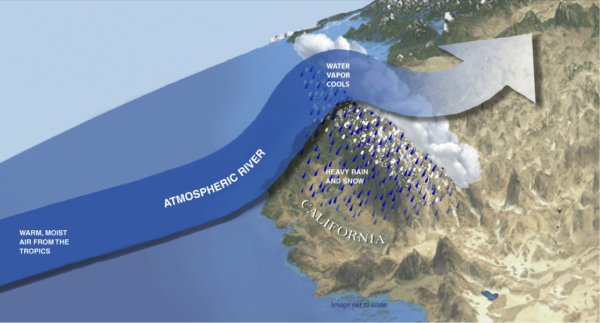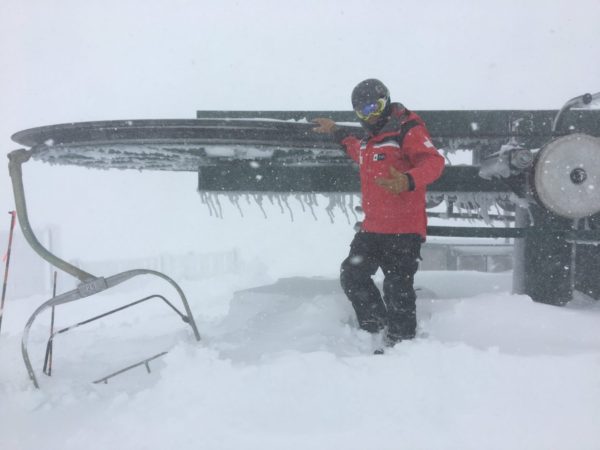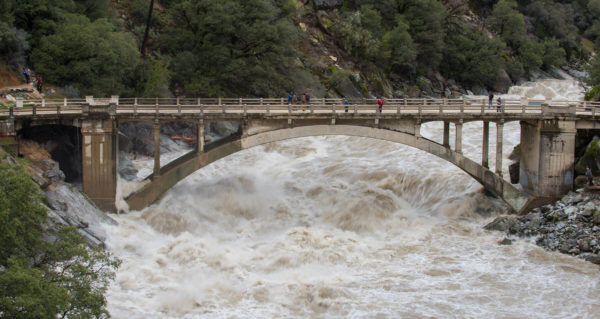A narrow plume of concentrated water vapor in the atmosphere, often responsible for significant precipitation events.
Atmospheric rivers are relatively long, narrow regions of water vapor in the atmosphere – like rivers in the sky – that commonly produce large amounts of rain and/or snow. The water vapor in atmospheric rivers is supplied by tropical and/or extratropical moisture sources from the ocean. Atmospheric rivers are the largest “rivers” of fresh water on Earth, transporting on average more than double the flow of the Amazon River in the form of water vapor. A well-known example is the “Pineapple Express,” a strong atmospheric river that is capable of bringing moisture from the tropics near Hawaii over to the U.S. West Coast. Atmospheric rivers are most common in coastal ranges like the Cascades or Sierras, but can reach as far inland as northern Montana and the Colorado Rockies. When an atmospheric river impacts the Cascades or Sierras, it typically results in multiple feet of snow above the snow line and heavy rain elsewhere, accompanied by strong winds. For these reasons, large atmospheric river events often coincide with major avalanche cycles.

Atmospheric rivers begin as rising moist air in the tropics and result in heavy rain and snow over land. Credit: National Oceanic and Atmospheric Administration

Satellite imagery of an atmospheric river moving inland over California. Credit: National Oceanic and Atmospheric Administration

Significant storm totals and a spike in avalanche danger are common with large atmospheric river events. Credit: Open Snow

